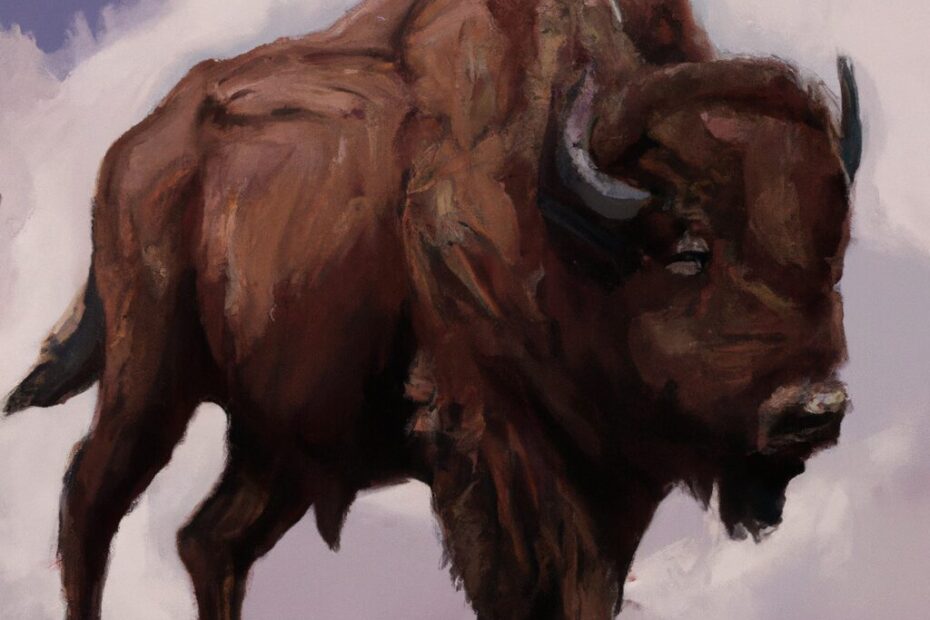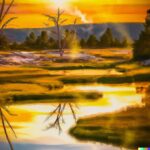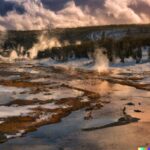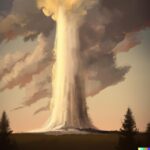Yellowstone National Park is a treasure trove of natural wonders and diverse ecosystems, making it a must-visit destination for nature enthusiasts and adventure seekers alike. In this article, we will delve into the rich history of the park, from its Native American roots to its establishment as the first national park in the world.
We will also explore the unique geography and geology of Yellowstone, including its volcanic activity and geological features. We will discuss the park’s vibrant flora and fauna, as well as the various activities and experiences that visitors can enjoy during their visit, from hiking and camping to wildlife viewing and scenic drives.
Join us on a journey through the captivating Yellowstone National Park!
History of Yellowstone National Park
Yellowstone National Park has a rich history that dates back to the presence of Native Americans and the later exploration by European settlers, leading to its establishment as the world’s first national park.
- Native American tribes, such as the Shoshone, Crow, and Blackfeet, have long revered the geothermal wonders and abundant wildlife within the park’s boundaries.
- The Lewis and Clark Expedition in the early 19th century brought international attention to the region, sparking curiosity in its unique geological features.
- Recognizing the importance of preserving this natural marvel, the Yellowstone Protection Act of 1872 was signed into law, setting a precedent for the conservation of other natural areas.
Through efforts like these, Yellowstone remains a beloved symbol of natural beauty and environmental stewardship.
Native American Presence
The Native American presence in Yellowstone National Park spans thousands of years, with various tribes like the Shoshone, Bannock, and Nez Perce having cultural connections to the land and its resources.
These tribes revered the natural wonders of Yellowstone, viewing the geothermal features as sacred sites with deep spiritual significance. The interactions between the Native American tribes and the environment were deeply intertwined, as they utilized the park’s resources for sustenance, medicine, and ceremonies.
The arrival of Europeans brought significant changes, disrupting centuries-old traditions and leading to conflicts over land and resources. Despite these challenges, the resilience and enduring cultural heritage of the Native American tribes continue to shape Yellowstone’s rich tapestry of history and diversity.
Exploration and Naming
The exploration of Yellowstone National Park by early 19th-century expeditions, such as that led by the Washburn-Langford-Doane party, brought attention to its geysers, hot springs, and other geothermal wonders, leading to its eventual naming and preservation.
Key figures like Ferdinand Hayden played pivotal roles in documenting and publicizing the geothermal marvels of Yellowstone, shaping perceptions of the park’s natural wonders. Hayden’s expeditions in the 1870s provided detailed descriptions and sketches of the geysers and hot springs, fueling widespread interest in the region’s unique features.
These early explorations not only contributed to the establishment of Yellowstone as the first national park in 1872 but also laid the foundation for ongoing efforts to conserve and protect its geothermal treasures for future generations to marvel at and enjoy.
Establishment as a National Park
Yellowstone National Park was established on March 1, 1872, by the U.S. Congress, marking a pivotal moment in conservation history as it set aside a vast wilderness area for public enjoyment and scientific study.
The legislative process that led to the designation of Yellowstone as the first national park involved significant efforts by conservationists and lawmakers who recognized the need to protect its unique ecosystem.
The establishment of boundaries and regulations within the park was crucial in safeguarding its diverse wildlife, thermal features, and geological wonders. These regulations helped ensure that visitors could experience the park’s natural beauty while minimizing human impact on the environment.
Yellowstone continues to be a shining example of successful conservation efforts, serving as a beacon for future generations to appreciate and preserve our natural treasures.
Geography and Geology of Yellowstone National Park
Yellowstone National Park’s geography and geology are characterized by its vast wilderness, diverse ecosystems, and breathtaking volcanic features that include geysers, hot springs, and colorful geothermal pools.
The park’s geographical layout is a testament to the extraordinary forces of nature at work. Nestled atop a supervolcano, Yellowstone boasts unique geological formations like the Grand Canyon of the Yellowstone and the famous Old Faithful geyser. Visitors marvel at the clear blue waters of Yellowstone Lake, the largest high-elevation lake in North America, formed by ancient glaciers. The park’s volcanic history is evident in the steaming fumaroles and bubbling mud pots scattered throughout, creating a landscape unlike any other on Earth.
Location and Size
Located primarily in the U.S. states of Wyoming, Montana, and Idaho, Yellowstone National Park spans over 2.2 million acres, encompassing iconic areas like Lamar Valley and offering a sprawling wilderness for visitors to explore.
Nestled within the Greater Yellowstone Ecosystem, this immense park showcases a mosaic of diverse landscapes ranging from lush forests to geothermal wonders.
The Lamar Valley, known as the ‘Serengeti of North America,’ attracts wildlife enthusiasts with its abundant herds of bison and elk.
Exploring the park means encountering geysers like Old Faithful and colorful hot springs bubbling with mineral-rich waters.
Hiking trails lead to stunning vistas, while rivers like the Yellowstone provide opportunities for fishing and rafting.
Yellowstone truly offers a playground for nature lovers.
Geological Features
Yellowstone National Park boasts a mesmerizing array of geological features, including world-renowned geysers like Old Faithful and vibrant hot springs such as the Grand Prismatic Spring, showcasing the park’s geothermal wonders.
These geothermal marvels are a result of the park’s location atop a massive volcanic hotspot, where intense geological activity takes place deep beneath the Earth’s surface. The iconic geysers, like clockwork, erupt with scalding water and steam, giving visitors a glimpse into the immense power of the Earth’s internal processes. The colorful hot springs, with their unique microbial mats, paint a vivid picture of the delicate balance between heat-loving microorganisms and mineral-rich waters in creating these stunning natural formations.
Volcanic Activity
Yellowstone National Park’s volcanic activity, evidenced by geothermal features like the Norris Geyser Basin and the Hayden Valley, underscores the dynamic geological forces at work beneath its surface.
This iconic park is a hotspot for geologists and nature enthusiasts alike, offering a glimpse into the powerful volcanic processes that have shaped its unique terrain. The Norris Geyser Basin, with its impressive steam vents and bubbling waters, provides a window into the park’s active hydrothermal features. Meanwhile, the Hayden Valley, known for its vast meadows and winding river, showcases the aftermath of past volcanic eruptions and the subsequent formation of grand landscapes. Visitors can witness firsthand the ongoing geological activity that continues to mold Yellowstone’s ever-changing environment.
Flora and Fauna of Yellowstone National Park
Yellowstone National Park is renowned for its rich biodiversity, encompassing a diverse array of flora and fauna, from majestic bison herds and elusive grizzly bears to vibrant wildflowers and ancient forests.
The park’s diverse ecosystem plays a crucial role in maintaining a delicate balance between different plant and animal species. The interconnectedness of these species is evident in the intricate food webs and habitats that support the wildlife populations. Conservation efforts within Yellowstone are focused on protecting and preserving this intricate web of life, ensuring that future generations can continue to marvel at the wonders of nature within the park. By safeguarding the biodiversity of Yellowstone, we are not only preserving individual species but also the entire ecosystem that sustains them.
Plant Life
Yellowstone National Park’s plant life is as varied as its landscapes, with flora ranging from colorful wildflowers to towering coniferous forests, showcasing botanical wonders like the terraces of Mammoth Hot Springs.
The park is home to an abundance of unique habitats that provide a conducive environment for a wide array of plant species to thrive.
One of the iconic flora found here is the majestic lodgepole pine, known for its tall slender trunks and vibrant green needles that create a striking contrast against the park’s geothermal features.
The botanical attractions of Yellowstone, such as the extraordinary Mammoth Hot Springs terraces, draw in visitors from around the world with their intricate patterns formed by calcium carbonate deposits, highlighting the fascinating interaction between geology and plant life.
Animal Species
Yellowstone National Park is home to a remarkable array of animal species, from the iconic American bison and elusive gray wolves to majestic elk and grizzly bears, showcasing the park’s incredible wildlife diversity.
These iconic species play vital roles in the park’s ecosystem. The bison, with their massive presence, are often seen grazing the vast grasslands. Wolves, known for their social dynamics and hunting prowess, roam the forests in search of prey. Elk, impressive with their bugling calls during mating season, prefer the wooded areas and meadows. Grizzly bears, the powerful predators, forage for food near rivers and lakes. Despite their resilience, these species face conservation challenges, highlighting the importance of preserving their habitats within the park.
Endangered Species
Yellowstone National Park plays a vital role in the conservation of endangered species such as the gray wolf and grizzly bear, with ongoing efforts aimed at protecting these iconic animals and preserving their habitats.
Conservation initiatives within the park focus on the recovery of wolf and grizzly bear populations, which have faced significant challenges due to habitat fragmentation, human-wildlife conflict, and climate change. The reintroduction programs for wolves have shown promising results, with populations steadily increasing. Maintaining genetic diversity and ensuring sufficient prey base remain critical for their long-term survival.
Similarly, for grizzly bears, habitat preservation is crucial as human development encroaches on their territories, leading to conflicts and reduced connectivity between populations. Continued efforts to protect these species and their habitats are essential for the overall biodiversity and ecological balance of the park.
Things to Do in Yellowstone National Park
Yellowstone National Park offers a plethora of activities for visitors, from thrilling wildlife viewing opportunities and scenic hiking trails to immersive camping experiences amidst the park’s natural beauty.
Visitors to the park can embark on wildlife viewing excursions to catch a glimpse of iconic species such as bison, elk, and grizzly bears in their natural habitats.
For outdoor enthusiasts, the park boasts a network of popular hiking trails that traverse diverse landscapes, ranging from winding rivers to majestic geothermal features.
Camping options in Yellowstone cater to all preferences, with designated campgrounds for RVs, tent camping, and backcountry camping, allowing visitors to immerse themselves in the serene wilderness surrounding them.
Hiking and Camping
Exploring Yellowstone through its extensive network of hiking trails and camping sites offers visitors an unparalleled opportunity to immerse themselves in the park’s untamed wilderness and discover its hidden treasures.
The park’s diverse trail system caters to all levels of hikers, from leisurely nature walks to challenging backcountry routes. Some of the popular trails include the picturesque Mount Washburn Trail, the challenging but rewarding South Rim Trail in the Grand Canyon of the Yellowstone, and the tranquil Mystic Falls Trail.
Camping enthusiasts can choose from developed campgrounds with basic amenities or opt for more primitive backcountry camping for a truly immersive experience in nature. Remember to follow Leave No Trace principles, bring bear spray, and check weather conditions before embarking on your outdoor adventures.
Wildlife Viewing
Wildlife viewing in Yellowstone National Park is a captivating experience, offering glimpses of iconic species like bison, grizzly bears, elk, and wolves against the backdrop of the park’s stunning landscapes.
Exploring the Lamar Valley, Hayden Valley, and the trails around Old Faithful are popular spots for observing these majestic creatures in their natural habitat.
The park’s extensive network of wildlife corridors and conservation programs contribute to the protection and sustainable management of these species, ensuring that visitors can continue to witness the beauty of Yellowstone’s diverse wildlife for generations to come.
Conservation efforts within the park also focus on preserving the delicate balance of ecosystems to maintain the health and vitality of the wildlife populations.
Scenic Drives and Tours
Embarking on scenic drives and guided tours in Yellowstone National Park offers visitors a comprehensive exploration of its diverse landscapes, from the picturesque Hayden Valley to the tranquil shores of Yellowstone Lake.
These tours provide an immersive experience where you can witness the park’s iconic geothermal features, such as geysers and colorful hot springs. Guided itineraries often include stops at Old Faithful, Grand Prismatic Spring, and the Grand Canyon of the Yellowstone, showcasing the park’s geological wonders.
Interpretive programs offer valuable insights into the park’s natural history, wildlife, and conservation efforts. Yellowstone’s scenic drives not only offer breathtaking views but also opportunities to spot diverse wildlife, including bison, elk, and bears, in their natural habitats.
Water Activities
Engaging in water activities at Yellowstone National Park, such as fishing in the pristine waters of Yellowstone Lake or capturing stunning photographs of its scenic beauty, offers visitors memorable experiences in this captivating natural setting.
Exploring the shores of Yellowstone Lake provides ample opportunities for wildlife photography, with the chance to capture images of majestic bald eagles, graceful swans, and the occasional elk quenching their thirst.
For those seeking more adventurous water-centric experiences, kayaking or paddleboarding on the serene waters of the lake offers a unique perspective of the surrounding mountainous landscape.
Guided boat tours are available for visitors wanting to learn about the geological wonders and history of the lake while enjoying a leisurely cruise on its crystal-clear waters.
Last Updated on February 7, 2024 by Jon Waraas – Originally Posted: February 6, 2024

I’m Jon Waraas, and I’ve been navigating the online world since 2006. By day, I’m the proud owner of some eCommerce gems, and by night, I’m the voice behind the adventures on Waraas.Com.
My heart, however, belongs to the wild beauty of Yellowstone National Park. I’ve got a collection of websites dedicated to sharing the wonders of this natural masterpiece. Oh, and did I mention? I’m currently building my own cabin inside the ghost town of Gilmore, Idaho – a cabin with tales to tell!
When I’m not immersed in the digital realm, you’ll find me lacing up my boots for a good hike or setting up camp under the star-studded sky.




